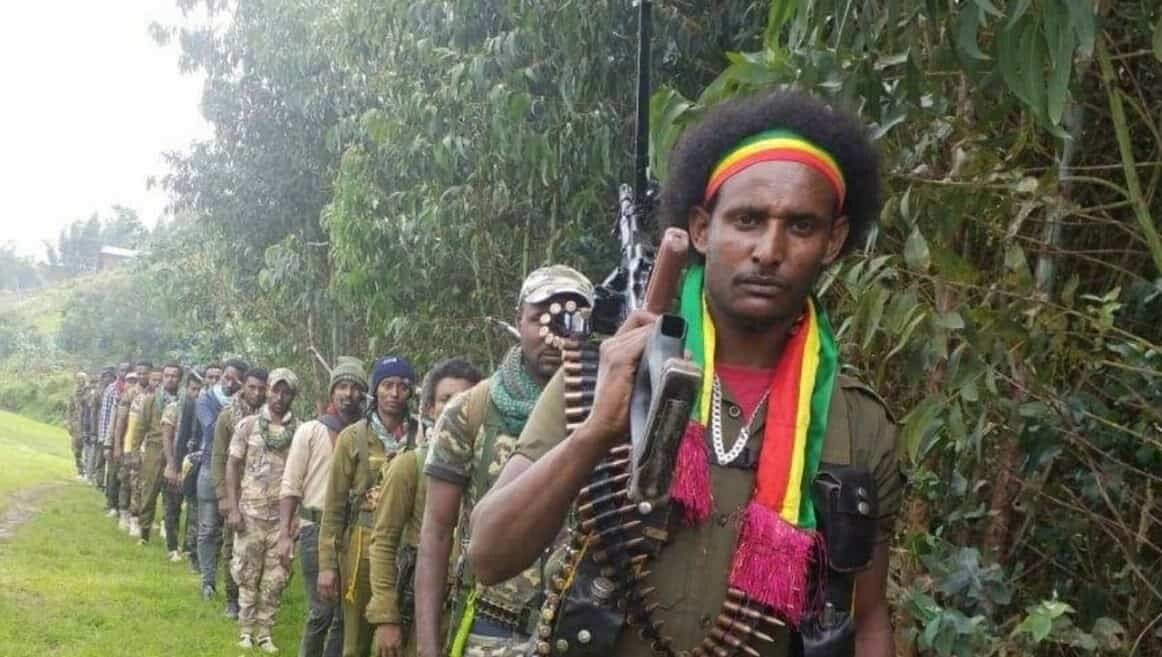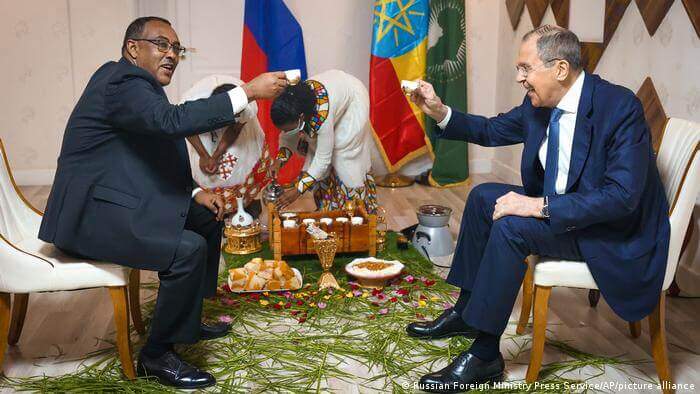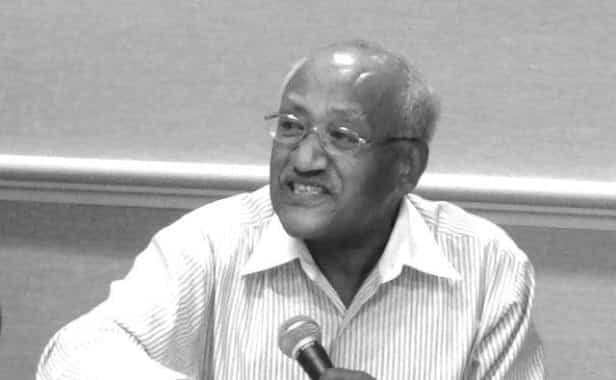 Ali Hindi,
Ali Hindi,
Horn of Africa Studies Unit, Centre for Arab Progress
Executive Summary
The militia name “Fano” widely appeared during the latest civil war in Ethiopia. The members of this militia fought alongside the Ethiopian military to stop the advancement of the Tigray Defence Forces, who controlled large areas in the Amhara region and were proceeding towards the capital Addis Ababa. Over the years, the name “Fano” has been associated with the allies of Prime Minister Abi Ahmed in the Amhara circles, especially in Abi Ahmed’s war against the Tigray Liberation Front. The political movement of the Amhara stood behind Abi Ahmed and supported his policy that limits the system of multinational federalism, as well as, restricted the powers of the Tigray political movement. However, recent developments hold the dangers of dismantling the alliance with the central government in Addis Ababa. Furthermore, the Fano movement insists on continuing the war against the Tigray Forces in Benishangul and Oromia regions, under the pretext of recovering the historical areas of Amhara and drawing new borders. In the end, who are “Fano” and why are they growing at the expense of all the other forces in the Amhara region?
Fano History
The founder of modern-day Ethiopia, Emperor Menelik II, decided to move his capital from Gondar to Addis Ababa. Gondar was originally the capital of the Amhara emperors who had successfully ruled with the Tigrayan emperors of Aksum. The Emperor’s main goal was to distance the new state from the areas that historically were a focal point of conflict and struggle. This then resulted in handing over the administration of these areas to the Princes and Kings of the states, which involved a legacy of conflicts about the ownership of a strip that extends from the areas of Benishangul in the northwest to the borders of Eritrea. This strip is regarded as the most fertile agricultural land in Ethiopia. The Amhara claim that the lands of the Tigray are not part of this strip. Furthermore, the lands of the Amhara are part of the area of Al-Walqait and Al-Raya (refer to Map 1 attached), and the Tigray relied on their unilateral authority after 1991 to determine the borders of this region and acquire further lands that belong to the Amhara (refer to Map 2 for the division of the regions during the era of the previous government). Thus, the Amhara are seeking to attain their goal of extending their power all the way to the Sudanese border, which ultimately becomes an outlet for them in the case of conflict between the different factions in Ethiopia.
Moving the center of the government to the south has opened the way for the return of bandit gangs in Ethiopia named “Shifta”. Where many of the princes of the region made deals with these gangs instead of fighting them. Especially since their numbers were large, in a time that has witnessed great economic stagnation, as a result of the First World War. The implication of these deals was that these bandits actually provided protection for the farmers working in the feudal lands of the princes and kings. Yet, it developed into including the Sudanese areas of Al Fashqa, and allowing some of the Ethiopians to possess large areas there. All of which caused a serious conflict between the “Shifta” gangs and the inhabitants of the land. Ultimately turned into a threatening conflict that could ignite a war between Ethiopia and Sudan.
Another aspect of the history of these groups is the fact that it brings back memories of “Fano” heroism which was a resistance led by Ethiopians against the Italian occupation. The current resistance boasted about belonging to the Fano heritage, and the Ethiopians even started singing poems about those who took up resistance against injustice.
After the end of the war and the return of Emperor Haile Selassie to his rule, some resistance leaders were awarded medals and granted privileges, including positions in the state and vast agricultural lands. At the same time, the Shifta problem persisted and finding solutions for it, in lieu of the continuing conflicts over land ownership between the Tigray and the Amhara, and between the Amhara and BeniShanqul on the other hand. Further, there was the issue of the central government managing the lands and the agricultural crops, which needed the support of the gangs. This strengthened the gangs and their activity starting in the sixties of the last century. Since then, their presence appears for a period of time and then disappears at other times.
Following the demonstrations that erupted in 2008, a group from the Amhara from the areas of Gojam and Gondar adopted the name of the “Al Fano Movement”, which coincided with the “Oromo Youth Movement” called “Qiro”. This step had its impact which increased with time in reforming the memory of the Amhara about adopting a nationalistic approach. The pretext that Amhara are Ethiopians who must adopt the agenda of the state and nothing else was initially faced with a lot of resistance. Then came the Fano proposal to unite the ranks of the Amhara and their leadership in order to preserve the Ethiopian state. It then became clear that it would not give up the interests of the Amhara at the expense of the Ethiopian state.
Al Fano Movement or Militia?
The commander of the Amhara People’s Forces states that these forces consist of four factions bearing the name of Fano and they are deployed in separate areas of the Amhara region, the Vanu Gondar Forces, the Vanu Forces, the Loa, the Vanu Shwa Forces, and the Van Gojam. Then the Head of Education and Public Relations Department in Fano states that his forces in the four factions decided to establish an alliance called the “Fano East of Amhara Alliance”. On the other hand, according to the commander of the Fano Forces in Walua, Masjana Desai, all the factions fighting under the name of Fano have not yet formed a joint command, and all current efforts are mere coordination that contributed to few successes in some of the military operations.
Dassi also accused the government of obstructing all attempts made to unify the Fano factions, citing the government’s lack of desire to return the ownership of the Al-Walqait area and Raya to the Amhara. However, the Vanua faction in the “Walu” region may face greater challenges than those faced by other factions. That the “Walu” region located on the road that connects the capital of Tigray Maqli and bordering the Afri region, is witnessing a property conflict between two groups; the Qint and the Agua. They claim that their inclusion in the Amhara region was unjust and that they belong to different ethnicity. Moreover, the extinction of their languages was only a result of the domination of the Amhara culture over other cultures. Currently, groups that do not carry an influential political weight are adopting the demands of these two groups (Qint and Agua) and joined an alliance of political and armed forces against the Ethiopian government.
Government Position
The government Defence Forces have provided military support to the Fano factions operating within the Fano Alliance east of Amhara, following the incursion of the Tigray Forces into some of the regional areas. However, the commander of the Fano forces in “Walloa” stated that his forces had to rely on self-armament.
Government Position
The government defense forces provided military support to the Fano factions operating within the Fano alliance east of Amhara, following the incursion of Tigray forces into some areas of the region. However, the commander of Fano’s forces in “Walloa” says that his forces had to rely on self-armament. After the end of the battles, which witnessed the retreat of the Tigray Defense Forces to the borders of the region, the relationship between the government and the militia leaders witnessed tension that was reflected in the local government of the Amhara region and the local government of the Oromo region. The Amhara Regional Government met the government’s call for the necessity of disarming the Fano factions with disapproval and said that we will not ask them to hand over their weapons, but at the same time we will not give them weapons or provide training for them.****
This prompted the Oromo regional government to accuse the Amhara government and the Fano militia of attacking areas near the border between North Amharic “Showa” and the Eastern Showa region in Oromia state. The Oromo regional government also accused the Fano of being behind the killing of civilians and burning of property in four areas in the “Wolga” region and the West Showa region. In turn, the Amhara regional government accused the forces of the Oromo Liberation Army, known as “Shenni”, of being behind the attacks on areas in Efrat, Ghadim, and Redis in the north of “Showa” in Amhara state.
The conflict between the government and the Fano factions on the one hand, and the Fano conflict with the Tigrayan forces and the Oromo Liberation Army on the other hand, portends that the circle of fighting is expanding to include the areas in the depth of the Amhara region such as around Lake Tana, where Gondar is located with its historical and religious symbolism in the north of the Al Baheer. Bahir Dar is located near the political capital of the Amhara, which is south of Lake Tana, and both cities are considered by the Amhara as the artery that extends to the Eritrean border. The areas are also annexed by the Tigray by force, and without it the Amhara would have little value.
Summary
Amhara nationalism formed the backbone of the establishment of the Ethiopian state and imposed its culture, language, and historical narrative on the state, especially since it is the main representative of the common interests of different ethnic groups. This nationalism is still characterized by the absence of ideological clarity and the institutional fortress that can be relied upon in forming a new vision that fits with the necessary needs to modify the form and nature of the political system. With this, they have transformed the fanatical and close-minded nationalist propositions from bearing the idea of a central state instead of a federation of nationalities towards nationalism that discusses the complexities of exclusion, the injustice of marginalization, and the loss of land. The conflicts that began between the components of the political and social forces within the Amhara nationalism indicate that they are now missing a coherent social base, which has always formed a solid basis for the unity and continuity of the Ethiopian state.
The rise of the Fano nationalist leaders to the scene and their attempt to fill the void formed by the diminishing size of their representation and role in the state in favor of justice with other nationalities put the second and primary nationalism in the country in a confrontation with major nationalities next to it. For this reason, various sources say that the forced reconciliation alliance between the Fano and the Eritrean government puts the Amhara against the Tigray, and would prolong the internal wars, stop the wheel of development, and open the doors to various external interventions. The Eritrean boat in which the Fano leaders have taken refuge is actually in danger of sinking. At the same time, if the Amharic political movement succeeds in unifying representation and benefiting from the capabilities of the state, the chance for the success of the major political reforms led by Prime Minister Abi Ahmed becomes greater. Especially that we find that a larger part of the basic organs of the state is based on the elite of the Amhara nationalists.
The tense relationship between the central government and the Fano forces carries with it major dangers to the future and unity of the Ethiopian state. It is possible to consider the reconciliation alliance between these militias and the Eritrean government, which has provided immense military and logistical support during their war against the Tigray, as threatening the future of the relationship that emerged between Ethiopia and Eritrea who have signed a peace agreement that ended hostility between the two countries in 2018. The tension and the resurgence of war omens in this part of Ethiopia will not stop but will extend to the neighboring countries. The mines of ethnic and border tensions left by colonialism are still under the ashes, and the breakdown of stability and peace in a large country like Ethiopia would open the door to major conflicts and foreign and regional interventions.

• Map 1: Al-Walqiyat area, an area of conflict between the Amhara and the Tigrayans
• • Map 2 shows the division of the regions during the reign of Haile Selassie and Mengistu, and it supports the Amhara’s argument in the ownership of the Walgait and Raya region
References:
*https://www.ezega.com/News/NewsDetails/7856/Fano-Will-Not-Lay-Down-Arms-If-Demands-Are-Not-Met-Chairman
**https://amharaonline.org/%E1%8D%8B%E1%8A%96-%E1%88%B5%E1%88%88-%E1%8A%A0%E1%8B%B2%E1%88%B5-%E1%8A%A0%E1%89%A0%E1%89%A3-%E1%8C%89%E1%8B%B3%E1%8B%AD%E1%8A%93-%E1%88%B5%E1%88%88-%E1%88%AB%E1%8B%AB-%E1%8C%89%E1%8B%B3%E1%8B%AD/
***https://www.eurasiareview.com/02022022-fano-a-living-saviour-of-the-amhara-people-and-the-ethiopian-spirit-analysis/
****https://www.bbc.com/amharic/61244459
*****https://addisstandard.com/news-amhara-state-cautions-individuals-to-register-private-weapons-within-four-days/
















